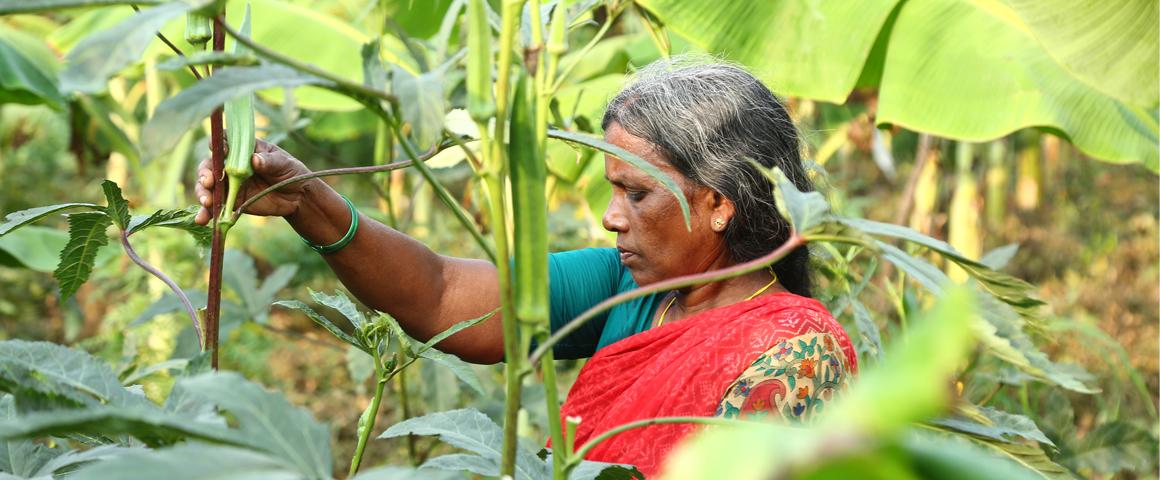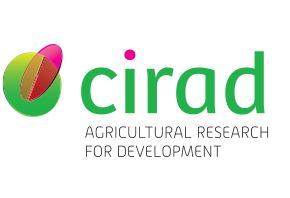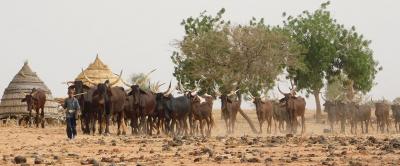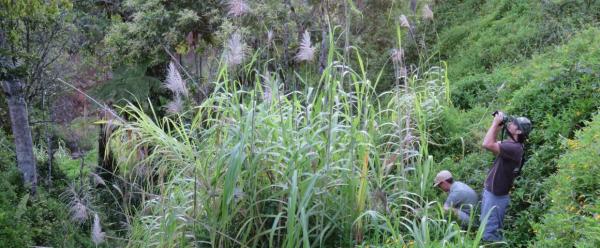Just out 27 October 2025
- Home
- Press area
- Press releases
- AgroEco2050 foresight study
AgroEco2050 foresight study: what macroeconomic impact would a full transition to agroecology have?

The world’s largest agroecological transition is under way in Andhra Pradesh © Dakka Nagaraju
The world’s largest agroecological transition has been under way in Andhra Pradesh since 2016. Encouraged by the government, almost a million micro-farmers – primarily women – have adopted an advanced form of AE known as “community-managed natural farming” (Dorin 2022, Dorin et al. 2024).
The co-authors of the AgroEco2050 collective foresight study, including CIRAD economist Bruno Dorin, have debated, quantified and compared the possible macroeconomic impact of two contrasting scenarios for 2050: on the one hand, the full adoption of natural farming (100% agroecological sociotechnical regime), and on the other, an intensification of industrial food and agriculture, as per the Green Revolution model currently dominant in India and elsewhere (100% industrial sociotechnical regime).
The performance of the two models was assessed with respect to various aspects such as land use, food production, employment, economic growth, and the income gap between farmers and other workers.
The exercise relied on a new version of the Agribiom model (Dorin et Joly 2020) and a series of workshops in India between 2020 and 2022 that brought together multi-stakeholder visions and expertise: scientists from various fields, decision-makers and administrators, farmer and NGO representatives, etc. The end aim of such exercises is to help societies and their governments to collectively better understand, choose and configure the world in which they would like to live and work.
“Provided appropriate public policies are introduced, the natural farming scenario proved to have many advantages that had not previously been revealed in the available academic literature on agroecology”, Bruno Dorin says. For instance, by 2050, compared to the industrial intensification scenario, it would:
- Increase food production per inhabitant, in terms of both quantity (+1000 kcal/day) and nutritive and health value;
- Regenerate vast swathes of rainfed land left fallow by industrial farming (+2.8 million hectares) and cultivate them year-round, thanks to high crop diversification, living soils and the microclimates thus created or recreated;
- Cut overall unemployment rates substantially (from 30% to 7%) thanks to jobs in AE (+5 million farmers);
- Increase income per farmer, primarily through significant savings on industrial inputs (lab-seeds, irrigation, fertilizers, pesticides, fuel, machinery and robots, credit, insurance, etc);
- Stem agrarian crises by significantly shrinking the average income gap between non-farmers and farmers (from 47% in industrial agriculture to 22% in AE);
- Boost the overall rate of growth of the economy and incomes (from +6% to +6.5%/year between 2020 and 2050).
“The agroecological scenario would be even more advantageous if the billions of euros currently spent on supporting industrial food and farming were replaced by some sort of payments for environmental services (PES)”, Bruno Dorin suggests. These would be paid to each agricultural worker (and not per hectare), according to their degree of adoption of farming practices known to be jointly beneficial on various environmental fronts (soils, water, climate, biodiversity). Those payments would remunerate some local and global services that humanity now desperately needs, and which could be efficiently provided by hundreds of millions of micro-agroecological farmers in the global South who, unlike those in the global North, are unable to increase their incomes by expanding and robotizing their agricultural area (Dorin et al. 2013; Dorin, 2017). Those services include climate change mitigation (by means of soil carbon storage), water savings and filtration, resilience to climate and economic shocks (thanks to agro-biodiversity), reduced environmental and also human health costs (under-nutrition, overweight, diabetes, cancer, etc).
To fuel similar thoughts and debates elsewhere in India and across the world, the book also includes a unique set of statistical estimates covering more than half a century (from the 1960s to 2020), on three geographical scales (world, India and Andhra Pradesh), illustrating the many interconnected facets of agrifood systems and their structural transformations.
The method used for and the results of the AgroEco2050 retro-foresight exercise in India were presented and debated in October 2023 with the public authorities in Andhra Pradesh (state government secretariat), then in New Delhi (Federal Ministry of Agriculture and NITI Aayog for the Prime Minister). They also prompted the rollout in 2022-23 of a similar retro-foresight exercise in Senegal (AgroEco2050-Senegal), the results of which are due to be co-published in late 2024 by CIRAD, FAO and ISRA-BAME. Furthermore, these exercises have triggered cooperation between India and Africa on agroecology, with an initial field trip to Andhra Pradesh (October 2023) by a delegation from seven African countries (Benin, Madagascar, Malawi, Rwanda, Senegal, Tunisia and Zambia).
As Bruno Dorin concludes, “These AgroEco2050 foresight exercises could also encourage international organizations such as the IPCC, IPBES and the World Bank to include similar large-scale micro-agroecology visions and practices in global models and scenarios, to make this alternative sociotechnical regime both more visible and more likely”.
References
Dorin B., Poisot A-S., Vijay Kumar T. 2024. Agro-industry versus agroecology? Two macroeconomic scenarios for 2050 in Andhra Pradesh, India. International Cooperation Centre of Agricultural Research for Development (CIRAD, France), Food and Agriculture Organization of the United Nations (FAO, Italy), Rythu Sadhikara Samstha (RySS, India), 140 p.
FAO, Cirad, RySS, 2024. Re-thinking food systems in Andhra Pradesh, India. How Natural Farming could feed the future (AgroEco2050 Brief), FAO, Rome, 12 p.
Other references
Dorin B., Degron R., Landy F., 2024. Agriculture industrielle, agriculture biologique et agroécologie : regards croisés Europe-Inde, Cahiers Agricultures, 33:31, pp. 1-10. https://doi.org/10.1051/cagri/2024026
Dorin B., 2022. Theory, Practice and Challenges of Agroecology in India, International Journal of Agricultural Sustainability, 20:2, pp. 153-67. https://doi.org/10.1080/14735903.2021.1920760
Dorin B., Joly P.B., 2020. Modelling world agriculture as a learning machine? From mainstream models to Agribiom 1.0, Land Use Policy, 96:July, pp. 103624. https://doi.org/10.1016/j.landusepol.2018.09.028
Dorin B., 2017. India and Africa in the Global Agricultural System (1960-2050), Economic & Political Weekly, LII:25-26, pp. 5-13.
Dorin B., Hourcade J.C., Benoit-Cattin M., 2013. A World without Farmers? The Lewis Path Revisited, CIRED Working Paper, 47, April, pp. 1-26.




























